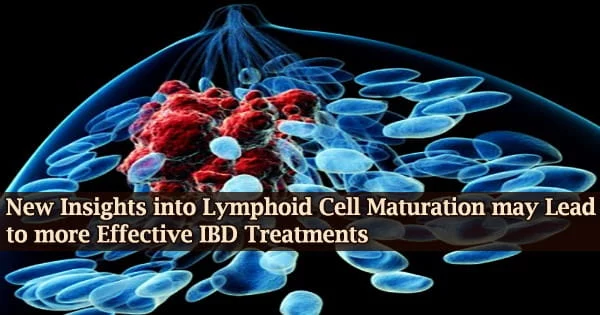The treatment concept for IBD (Inflammatory Bowel Disease) can be depicted as a pyramid. As novel drugs for the treatment of inflammatory bowel disease have become available, this therapy pyramid has been adopted.
A team of researchers at Sweden’s Karolinska Institutet studied how innate lymphoid cells (ILCs), which play a role in inflammatory bowel disease (IBD), evolve into mature cells.
The discoveries may pave the way for more effective treatments for IBD, a disease that causes a lot of pain and is associated to a higher risk of colon cancer. The findings were published in the journal Science Immunology today.
Inflammatory bowel disease (IBD) is a persistent inflammation of the gut mucosa that has been linked to an increased risk of colon cancer. Symptoms such as stomach pain and weight loss commonly appear before middle age.
Although the etiology is unknown, genetic, environmental, and immunological variables are thought to play a role. Because a considerable proportion of IBD patients do not react to current treatments, there is a pressing need for fresh research regarding the disease’s processes.
The function of ILCs changes during inflammation and therefore ILCs represent a promising therapeutic target for conditions like inflammatory bowel disease (IBD).
Efthymia Kokkinou
Treatment for IBD depends on many various factors:
- how much of the gut is affected
- what part of the gut is affected
- how severe the symptoms are
- how aggressive is inflammation on endoscopy and microscopically
- presence of other gastrointestinal or systemic disorders
- patient’s age
ILCs are lymphocytes, a type of immune cell found in the mucosa. They are part of the immune system and keep tissue functions like mucous production under check. ILCs have been found to modify function during inflammation in previous studies, making them a prospective target for IBD treatment.
ILCs were isolated from tonsils and gut tissue of patients who had had resection surgery or endoscopic evaluation in this investigation. The trial included a total of 48 individuals, 31 of whom had IBD. The ILCs were then thoroughly investigated, both after isolation and after cell culture.
The findings reveal that a subset of ILCs is a precursor to mature ILCs and accumulates in the intestinal mucosa of IBD patients. Factors in the gut environment can then affect the immature ILCs’ metabolism, causing accelerated cell division and the generation of cytokines such as IL-22, which serves to protect the intestinal tissue.
“The function of ILCs changes during inflammation and therefore ILCs represent a promising therapeutic target for conditions like inflammatory bowel disease,” says the study’s first author Efthymia Kokkinou, doctoral student at the Department of Medicine, Huddinge at Karolinska Institutet.
“Insight into how these cells develop from immature cells into mature cells in tissue helps us understand how they influence tissue function or inflammation in mucosa and how they can be manipulated for therapeutic purposes.”
The researchers now want to see if the presence and properties of immature intestinal ILCs can predict drug responses, especially those containing the active ingredients ustekinumab, infliximab, and tofacitinib, which are used to treat Crohn’s disease and ulcerative colitis, two of the most common IBDs.
“These studies are important since the right choice of effective treatment can reduce both personal suffering and societal costs,” says Jenny Mjösberg, associate professor at the same department at Karolinska Institutet and the study’s senior author.
The Erling-Persson Foundation, the Swedish Research Council, the Swedish Cancer Society, the Swedish Foundation for Strategic Research, the Knut and Alice Wallenberg Foundation, and Karolinska Institutet all contributed to the study.





